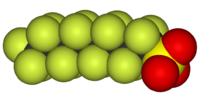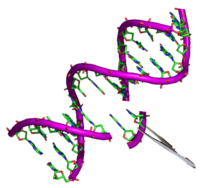
Fish short-term reproduction assay with atrazine and the Japanese medaka (Oryzias latipes).
Sign Up to like & getrecommendations! Published in 2017 at "Environmental toxicology and chemistry"
DOI: 10.1002/etc.3769
Abstract: Breeding groups of Japanese medaka (Oryzias latipes) were exposed to atrazine at measured concentrations of 0.6, 5.5, and 53 μg/L for 35 d. Evaluated endpoints included survival, fecundity, fertility, growth (weight and length), behavior, secondary sex… read more here.
Keywords: oryzias latipes; reproduction; medaka; exposure ... See more keywords

Histopathological evaluation of the interrenal gland (adrenal homolog) of Japanese medaka (Oryzias latipes) exposed to graphene oxide
Sign Up to like & getrecommendations! Published in 2022 at "Environmental Toxicology"
DOI: 10.1002/tox.23610
Abstract: Due to unique physicochemical properties and wide industrial and biomedical applications, graphene oxide (GO) is ubiquitous in the aquatic ecosystem. Using Japanese medaka (Oryzias latipes) fish as a model, we previously demonstrated minimal endocrine disrupting… read more here.
Keywords: oryzias latipes; medaka; japanese medaka; medaka oryzias ... See more keywords

Alteration of development and gene expression induced by in ovo-nanoinjection of 3-hydroxybenzo[c]phenanthrene into Japanese medaka (Oryzias latipes) embryos.
Sign Up to like & getrecommendations! Published in 2017 at "Aquatic toxicology"
DOI: 10.1016/j.aquatox.2016.11.020
Abstract: Benzo[c]phenanthrene (BcP) is a highly toxic polycyclic aromatic hydrocarbon (PAHs) found throughout the environment. In fish, it is metabolized to 3-hydroxybenzo[c]phenanthrene (3-OHBcP). In the present study, we observed the effects of 1nM 3-OHBcP on the… read more here.
Keywords: heart; medaka; gene expression; expression ... See more keywords

Interaction between hypoxia and perfluorobutane sulfonate on developmental toxicity and endocrine disruption in marine medaka embryos.
Sign Up to like & getrecommendations! Published in 2020 at "Aquatic toxicology"
DOI: 10.1016/j.aquatox.2020.105466
Abstract: The co-occurrence of hypoxia and xenobiotics is extremely common in natural environments, highlighting the necessity to elicit their interaction on aquatic toxicities. In the present study, marine medaka embryos were exposed to various concentrations (nominal… read more here.
Keywords: pfbs hypoxia; medaka; exposure; pfbs ... See more keywords

Quantifying the vector effects of polyethylene microplastics on the accumulation of anthracene to Japanese medaka (Oryzias latipes).
Sign Up to like & getrecommendations! Published in 2020 at "Aquatic toxicology"
DOI: 10.1016/j.aquatox.2020.105643
Abstract: To better assess the risk of microplastics (MPs) as a vector for contaminants, it is essential to understand the relative importance of MPs compared to other pathways for chemical transfer as well as the consequences… read more here.
Keywords: oryzias latipes; vector; quantifying vector; medaka ... See more keywords

Chemical and thermal sensitivity of medaka TRPA1 analyzed in heterologous expression system.
Sign Up to like & getrecommendations! Published in 2017 at "Biochemical and biophysical research communications"
DOI: 10.1016/j.bbrc.2017.10.057
Abstract: TRPA1 of insects and several tetrapod vertebrates except for those of rodents have been reported to be activated by noxious chemicals and also by high temperature with a relatively clear threshold. We previously analyzed the… read more here.
Keywords: trpa1; medaka; chemical thermal; heat ... See more keywords

Ingestion, egestion and post-exposure effects of polystyrene microspheres on marine medaka (Oryzias melastigma).
Sign Up to like & getrecommendations! Published in 2019 at "Chemosphere"
DOI: 10.1016/j.chemosphere.2019.04.098
Abstract: Microplastics (MPs) are of environmental concern due to their bioavailability and potential impacts on a wide range of marine biota. In this study, we investigated the ingestion, bioaccumulation and egestion of fluorescent polystyrene (PS) micospheres… read more here.
Keywords: egestion; exposure; medaka; marine medaka ... See more keywords

Choriogenin transcription in medaka embryos and larvae as an alternative model for screening estrogenic endocrine-disrupting chemicals.
Sign Up to like & getrecommendations! Published in 2020 at "Ecotoxicology and environmental safety"
DOI: 10.1016/j.ecoenv.2020.110324
Abstract: This study assessed the transcription levels of estrogen-responsive genes, such as vitellogenins (Vtg1 and Vtg2), choriogenins (ChgL, ChgH, and ChgHm), cytochrome P450 aromatase (CYP19a1b), and ER subtypes (ERα, ERβ1, and ERβ2), in 7 days-post-fertilization (dpf)… read more here.
Keywords: embryos; dpf; medaka; embryos larvae ... See more keywords

Ingestion of polyethylene microbeads affects the growth and reproduction of medaka, Oryzias latipes.
Sign Up to like & getrecommendations! Published in 2019 at "Environmental pollution"
DOI: 10.1016/j.envpol.2019.113094
Abstract: Research using various species of wild and cultured fish has identified negative effects of short-term exposure to microbeads. Although wild animals might be contaminated with microbeads and/or other pharmaceuticals, data regarding the long-term effects remain… read more here.
Keywords: medaka; long term; growth; polyethylene microbeads ... See more keywords

Maternal Transfer of 2-Ethylhexyl Diphenyl Phosphate Leads to Developmental Toxicity Possibly by Blocking the Retinoic Acid Receptor and Retinoic X Receptor in Japanese Medaka (Oryzias latipes).
Sign Up to like & getrecommendations! Published in 2021 at "Environmental science & technology"
DOI: 10.1021/acs.est.0c06809
Abstract: 2-Ethylhexyl diphenyl phosphate (EHDPP) has been detected in wild fish with high concentrations, which may pose a risk in the embryo development considering its potential maternal transfer. In this study, EHDPP was demonstrated to elicit… read more here.
Keywords: ethylhexyl diphenyl; medaka; maternal transfer; retinoic ... See more keywords

Dynamic transcriptional and chromatin accessibility landscape of medaka embryogenesis.
Sign Up to like & getrecommendations! Published in 2020 at "Genome research"
DOI: 10.1101/gr.258871.119
Abstract: Medaka (Oryzias latipes) has become an important vertebrate model widely used in genetics, developmental biology, environmental sciences, and many other fields. A high-quality genome sequence and a variety of genetic tools are available for this… read more here.
Keywords: model; medaka embryogenesis; medaka; landscape medaka ... See more keywords